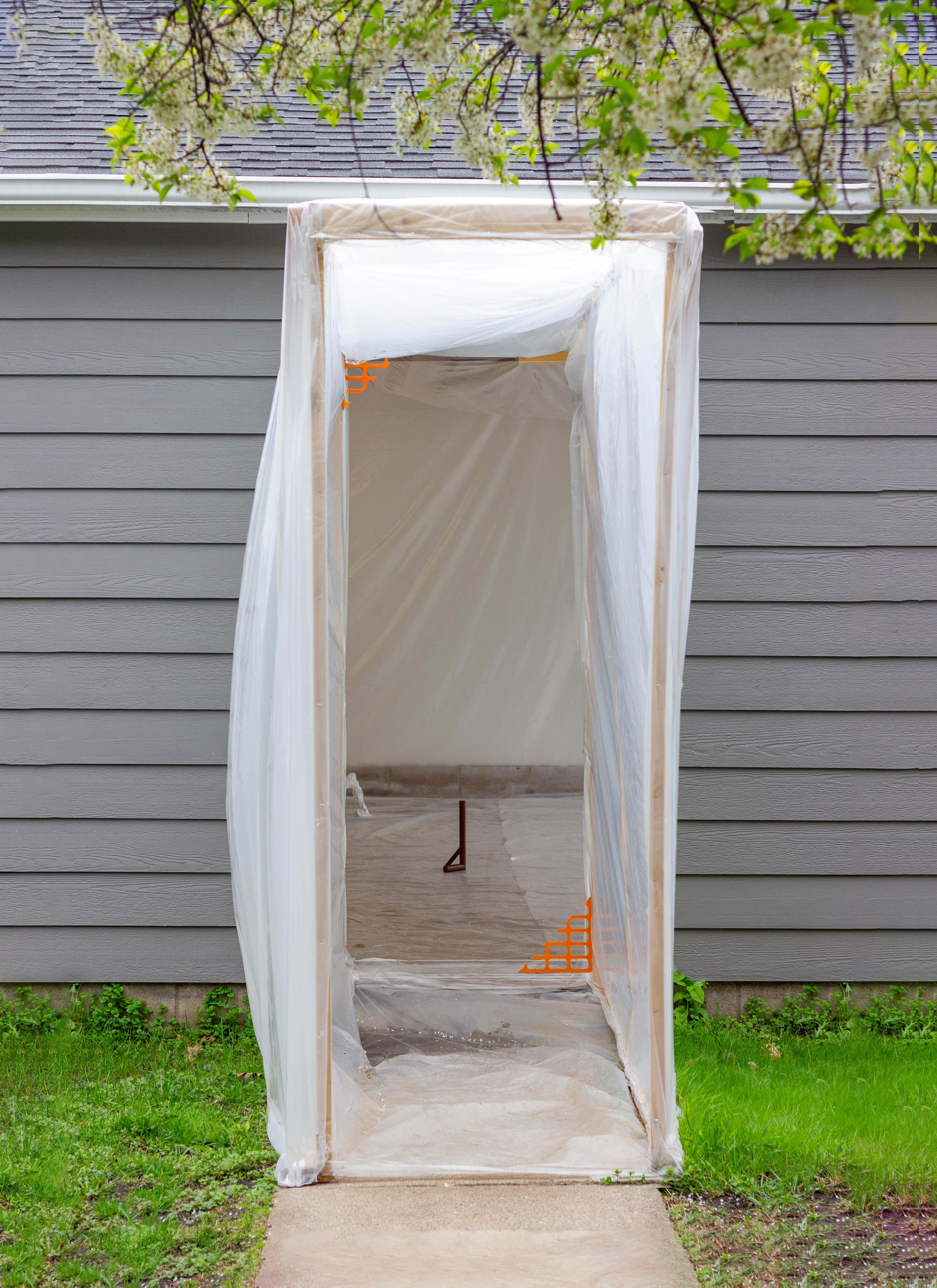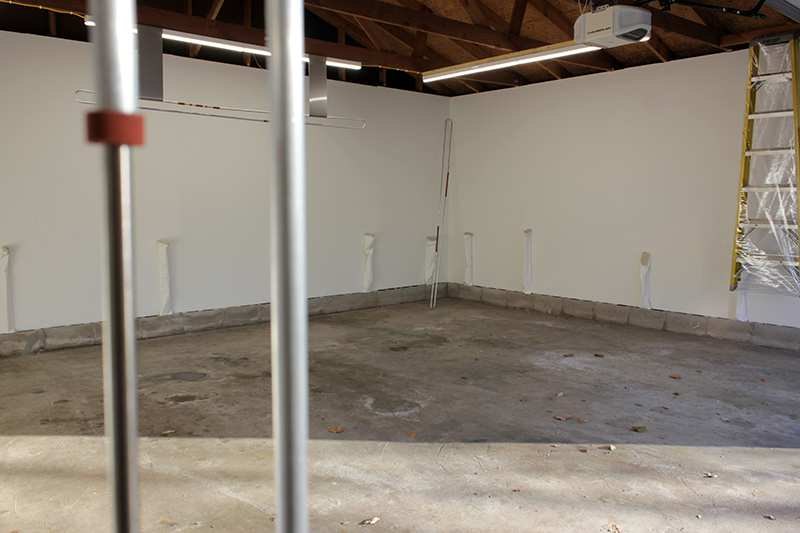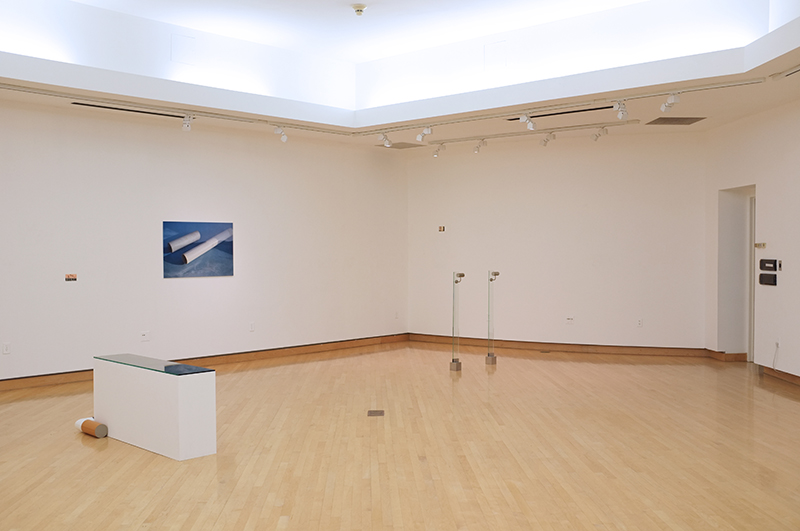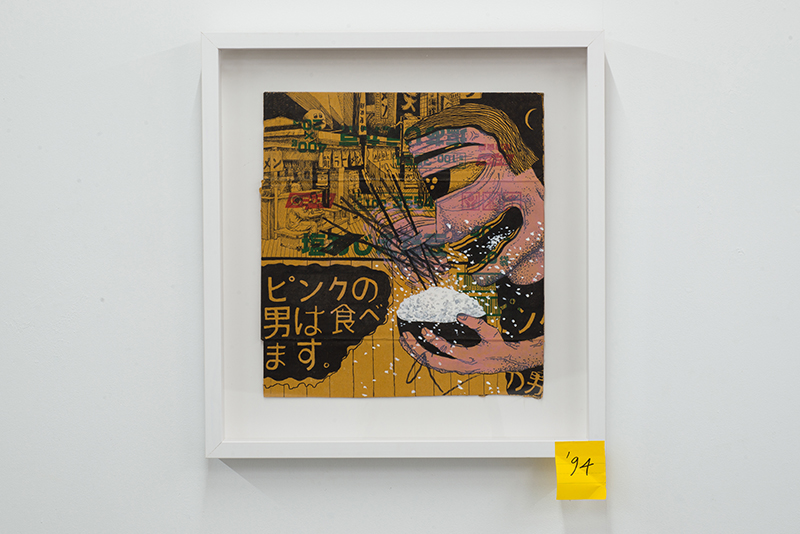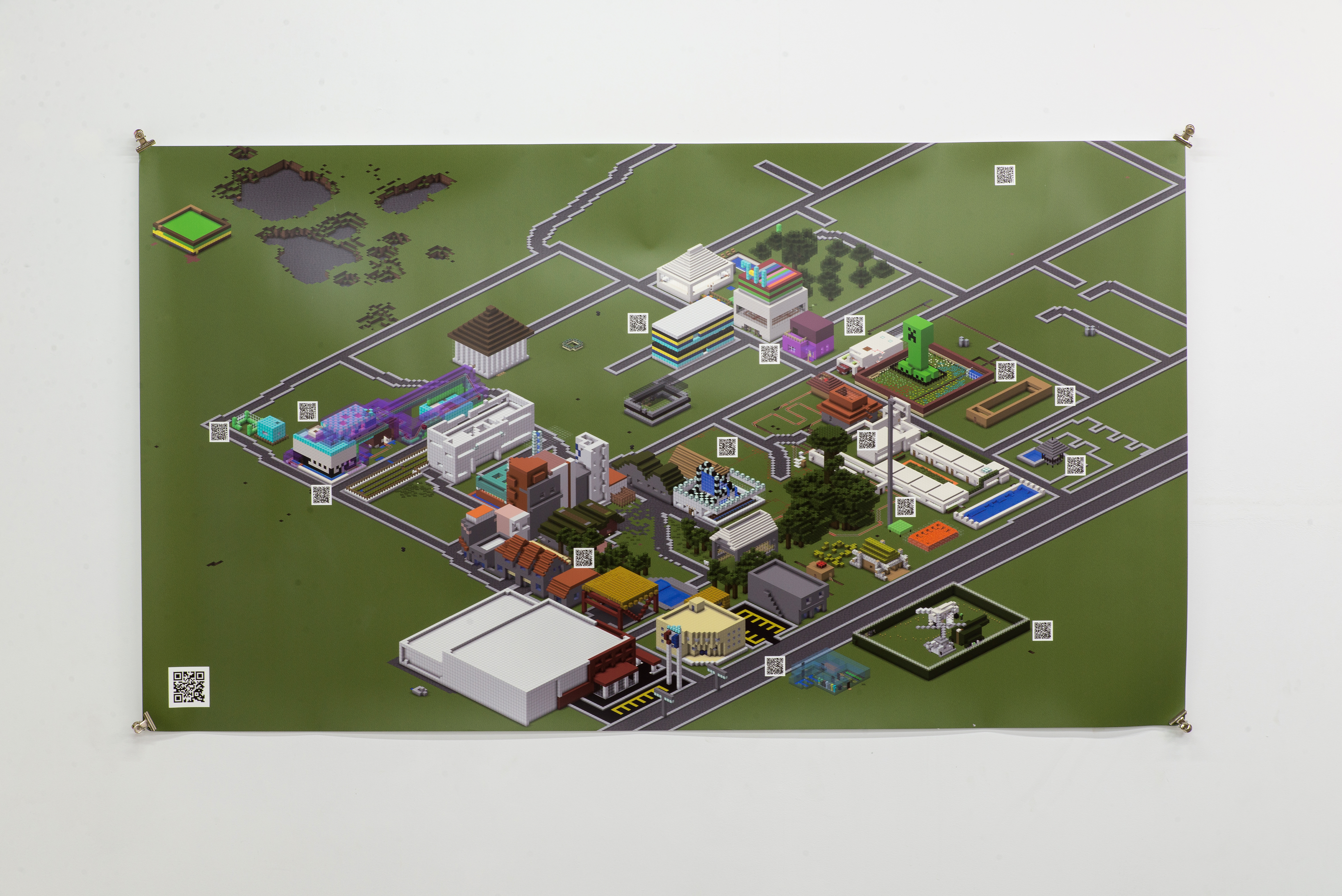FOGSTAND
Gallery & Studio
GOODBYE!
漢 ︎︎︎ EN
Contact ︎︎︎ 聯絡
Support ︎︎︎ 贊助
About ︎︎︎ 關於
Exhibition
Archive ︎︎︎ 歷年
Artist ︎︎︎ 藝術家
Workshop ︎︎︎ 工坊
Residency ︎︎︎ 駐村
News ︎︎︎ 新聞
Shop ︎︎︎ 販售
Gallery & Studio
GOODBYE!
漢 ︎︎︎ EN
Contact ︎︎︎ 聯絡
Support ︎︎︎ 贊助
About ︎︎︎ 關於
Exhibition
Archive ︎︎︎ 歷年
Artist ︎︎︎ 藝術家
Workshop ︎︎︎ 工坊
Residency ︎︎︎ 駐村
News ︎︎︎ 新聞
Shop ︎︎︎ 販售
FOGSTAND Gallery & Studio is a nonprofit art space and creative education centre. The space is temporarily closed.
This website has served as an online archive since 2024.
©2014-2025
FOGSTAND Gallery & Studio. All rights reserved.










Exhibition on view: 07/30 - 09/25/2016
Opening : 07/30/2016, 1-5pm
Venue: FOGSTAND @ Hualien, Taiwan
Maggie Thompson (born 1989, USA) was born and raised in Minneapolis, MN and is a member of the Fond Du Lac Band of Ojibwe. In 2013, she received her Bachelor of Fine Art in Textiles at the Rhode Island School of Design. After graduation she moved back to Minneapolis where she had her first solo exhibition, Where I Fit at All My Relations Gallery in 2014. Her work has also been exhibited at the Bloomington Arts Center, Intermedia Arts and the Minneapolis Institute of Art, where her piece "Family Portrait " was recently acquired into the collections of the MIA. Thompson was recently awarded the Minnesota State Arts Board Cultural Community Partnership Grant and the Native Arts and Cultures Foundation Regional Fellowship to support a new body of work for this exhibit, On Borrowed Time. She was also awarded a Jerome Fiber Artists Project Grant through Textile Center for which she will be creating a new line of clothing drawing on traditional Native clothing and bead working. She is also the gallery manager for Two Rivers Gallery and has a strong studio practice where she runs a small knitwear business known as Makwa Studio.
1. The Ojibwe, Ojibwa, or Chippewa are a group of indigenous peoples in North America. There are Ojibwe communities in both Canada and the United States. In Canada, they are the second-largest population among First Nations, surpassed only by the Cree. In the United States, they have the fourth-largest population among Native American tribes, surpassed only by the Navajo, Cherokee, and Lakota.
2. The Whipple Procedure is the most commonly performed surgery to remove tumors in the pancreas. In a standard Whipple procedure, the surgeon removes the head of the pancreas, the gallbladder, part of the duodenum which is the uppermost portion of the small intestine, a small portion of the stomach called the pylorus, and the lymph nodes near the head of the pancreas.
Opening : 07/30/2016, 1-5pm
Venue: FOGSTAND @ Hualien, Taiwan
Maggie Thompson (born 1989, USA) was born and raised in Minneapolis, MN and is a member of the Fond Du Lac Band of Ojibwe. In 2013, she received her Bachelor of Fine Art in Textiles at the Rhode Island School of Design. After graduation she moved back to Minneapolis where she had her first solo exhibition, Where I Fit at All My Relations Gallery in 2014. Her work has also been exhibited at the Bloomington Arts Center, Intermedia Arts and the Minneapolis Institute of Art, where her piece "Family Portrait " was recently acquired into the collections of the MIA. Thompson was recently awarded the Minnesota State Arts Board Cultural Community Partnership Grant and the Native Arts and Cultures Foundation Regional Fellowship to support a new body of work for this exhibit, On Borrowed Time. She was also awarded a Jerome Fiber Artists Project Grant through Textile Center for which she will be creating a new line of clothing drawing on traditional Native clothing and bead working. She is also the gallery manager for Two Rivers Gallery and has a strong studio practice where she runs a small knitwear business known as Makwa Studio.
1. The Ojibwe, Ojibwa, or Chippewa are a group of indigenous peoples in North America. There are Ojibwe communities in both Canada and the United States. In Canada, they are the second-largest population among First Nations, surpassed only by the Cree. In the United States, they have the fourth-largest population among Native American tribes, surpassed only by the Navajo, Cherokee, and Lakota.
2. The Whipple Procedure is the most commonly performed surgery to remove tumors in the pancreas. In a standard Whipple procedure, the surgeon removes the head of the pancreas, the gallbladder, part of the duodenum which is the uppermost portion of the small intestine, a small portion of the stomach called the pylorus, and the lymph nodes near the head of the pancreas.
FOGSTAND is pleased to announce, Mending, a solo exhibition by American artist Maggie Thompson, her first solo exhibition in Taiwan. Situated somewhere between her Native American heritage (she is a member of the Fond Du Lac Band of Ojibwe) and the fractured, ongoing hybridization of contemporary art practice, Thompson likens her material outcomes to a form of continual mending and remembering.1 The result is a startling confrontation: memory as mending (mending as memory), in that memory only presents itself in its active form —remembering— an act of mending otherwise fragmentary and non-coalescent experiences.
This continual renewal made possible by the process of mending is made more powerful when paired with Thompson’s sensitivity toward her Ojibwe heritage. While Thompson’s practice has taken a blunt look at the notion of dogmatic tradition as trope, particularly with Native American Iconography, she has never exhibited a sense cynicism or transcendent ambivalence. Instead, Thompson understands the pitfalls of crystallizing a memory of prior tradition and, instead relies on her own insecurities of possessing them, which allow for various forms of hybridization, localization, depreciation, and ironic play.
It is crucial to recognize how Thompson’s creative impetus aligns so closely to her chosen process, namely textiles. Again, Thompson strikes an earnest balance between tradition, critique and formal play. This can be seen operating in her work “Faces”. Consisting of hospital blankets —stitched in various places in order to produce vague impressions of faces— this artwork embraces multiple aspects of the personal and extra-personal. First there is the personal mending, which recalls the “Whipple Procedure” her father underwent while suffering from pancreatic cancer.2 Next there is the extra-personal mending, namely to the allusions to a sense of being haunted by the expectations of her heritage, in this case by her father who also acts as her link to her Ojibwe identity. The result is a work of dual gravity and, as consequence of death, dual unmooring of those said affiliations, mended together by loose stitches, acting as figures on a hospital blanket.
Caught. A suitable word to describe a viewer’s experience of Thompson’s creative output. Not unlike those stitches, viewers are intentionally situated in a place where personal histories and heritages remain separate to most, yet, within the close proximity allowed by her sincerity and desire to share, Thompson’s practice invites us to mend our own, always threadbare, experiences of loss, family, and belonging.
︎︎︎ 漢
This continual renewal made possible by the process of mending is made more powerful when paired with Thompson’s sensitivity toward her Ojibwe heritage. While Thompson’s practice has taken a blunt look at the notion of dogmatic tradition as trope, particularly with Native American Iconography, she has never exhibited a sense cynicism or transcendent ambivalence. Instead, Thompson understands the pitfalls of crystallizing a memory of prior tradition and, instead relies on her own insecurities of possessing them, which allow for various forms of hybridization, localization, depreciation, and ironic play.
It is crucial to recognize how Thompson’s creative impetus aligns so closely to her chosen process, namely textiles. Again, Thompson strikes an earnest balance between tradition, critique and formal play. This can be seen operating in her work “Faces”. Consisting of hospital blankets —stitched in various places in order to produce vague impressions of faces— this artwork embraces multiple aspects of the personal and extra-personal. First there is the personal mending, which recalls the “Whipple Procedure” her father underwent while suffering from pancreatic cancer.2 Next there is the extra-personal mending, namely to the allusions to a sense of being haunted by the expectations of her heritage, in this case by her father who also acts as her link to her Ojibwe identity. The result is a work of dual gravity and, as consequence of death, dual unmooring of those said affiliations, mended together by loose stitches, acting as figures on a hospital blanket.
Caught. A suitable word to describe a viewer’s experience of Thompson’s creative output. Not unlike those stitches, viewers are intentionally situated in a place where personal histories and heritages remain separate to most, yet, within the close proximity allowed by her sincerity and desire to share, Thompson’s practice invites us to mend our own, always threadbare, experiences of loss, family, and belonging.
︎︎︎ 漢




















